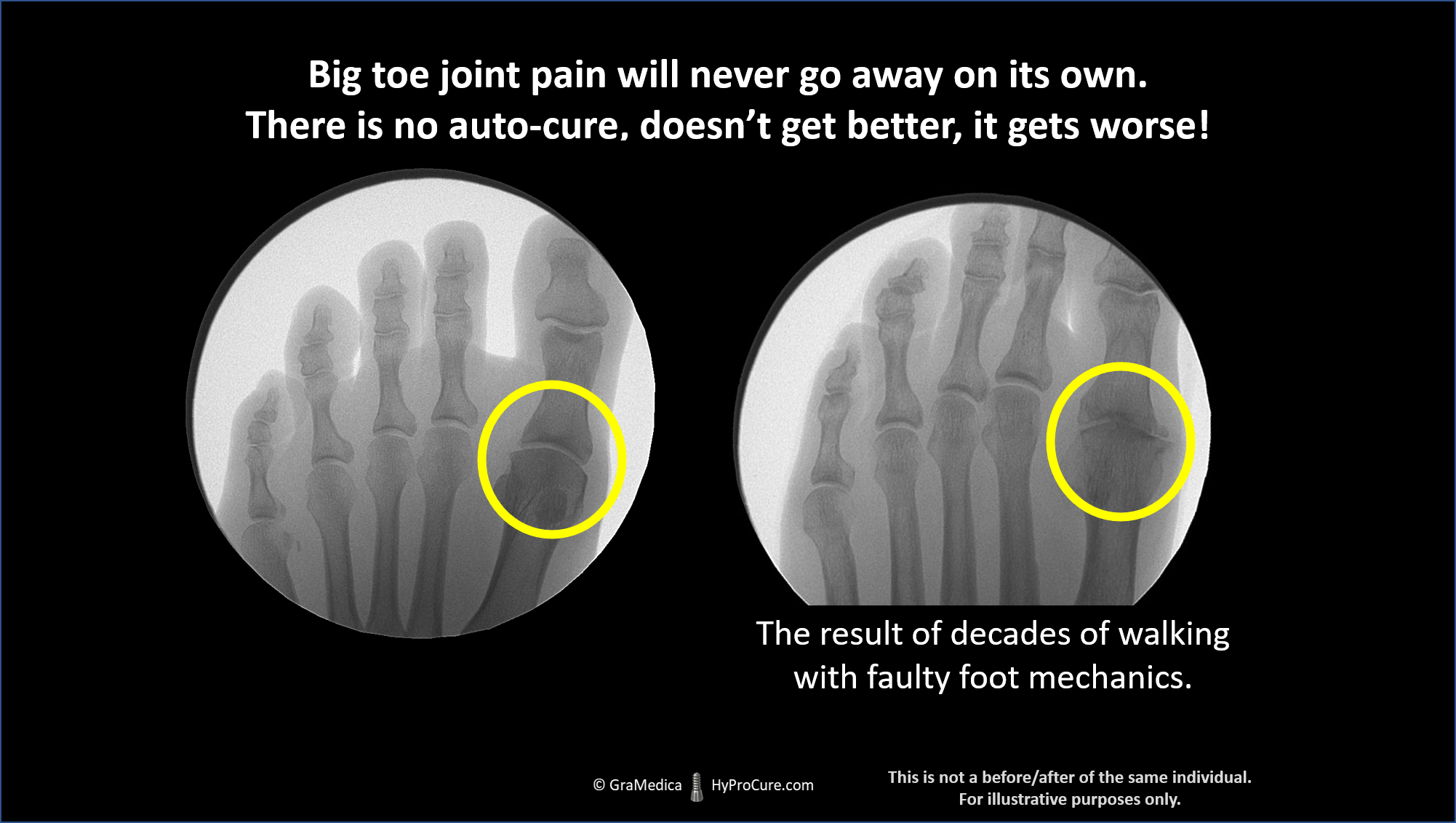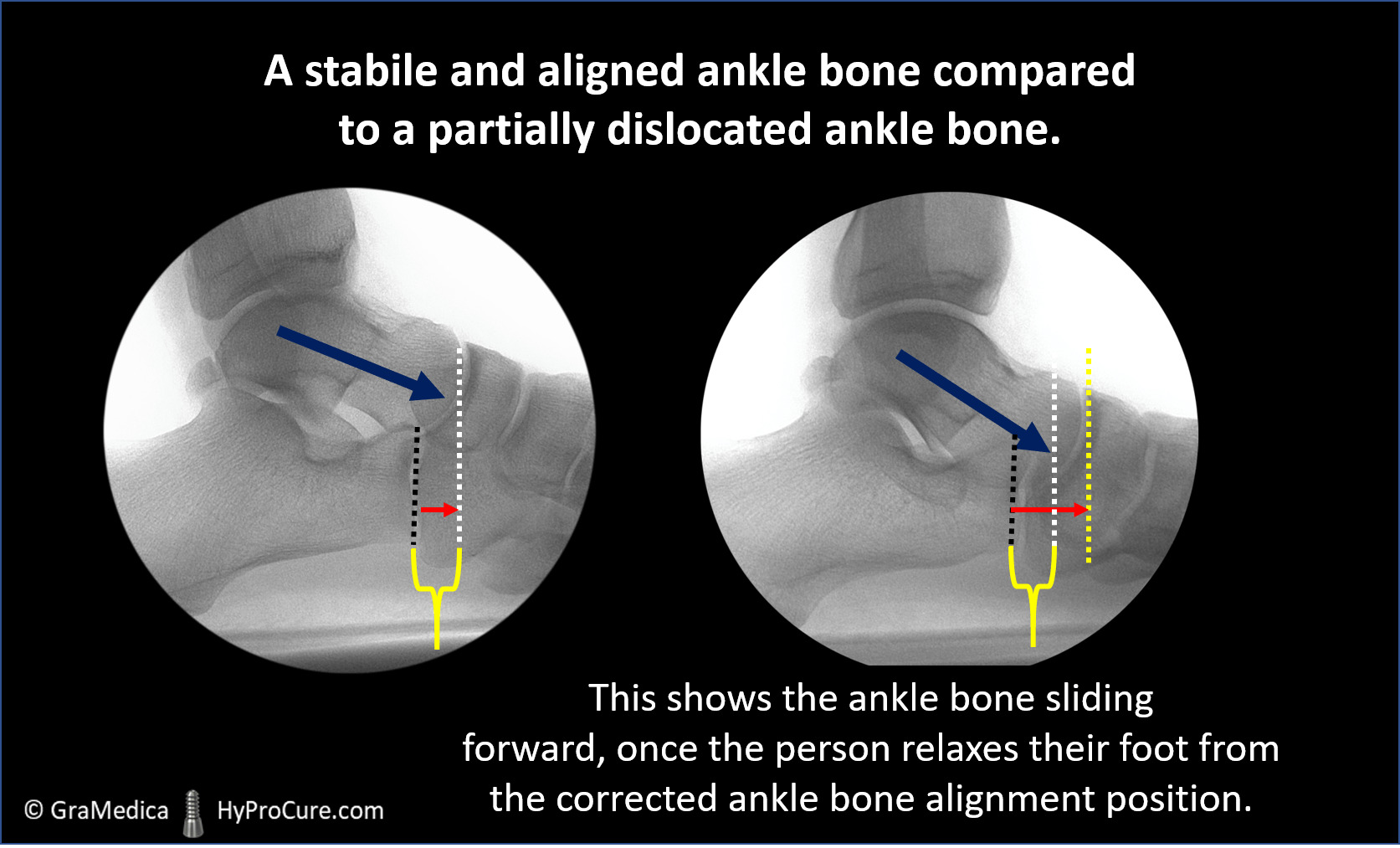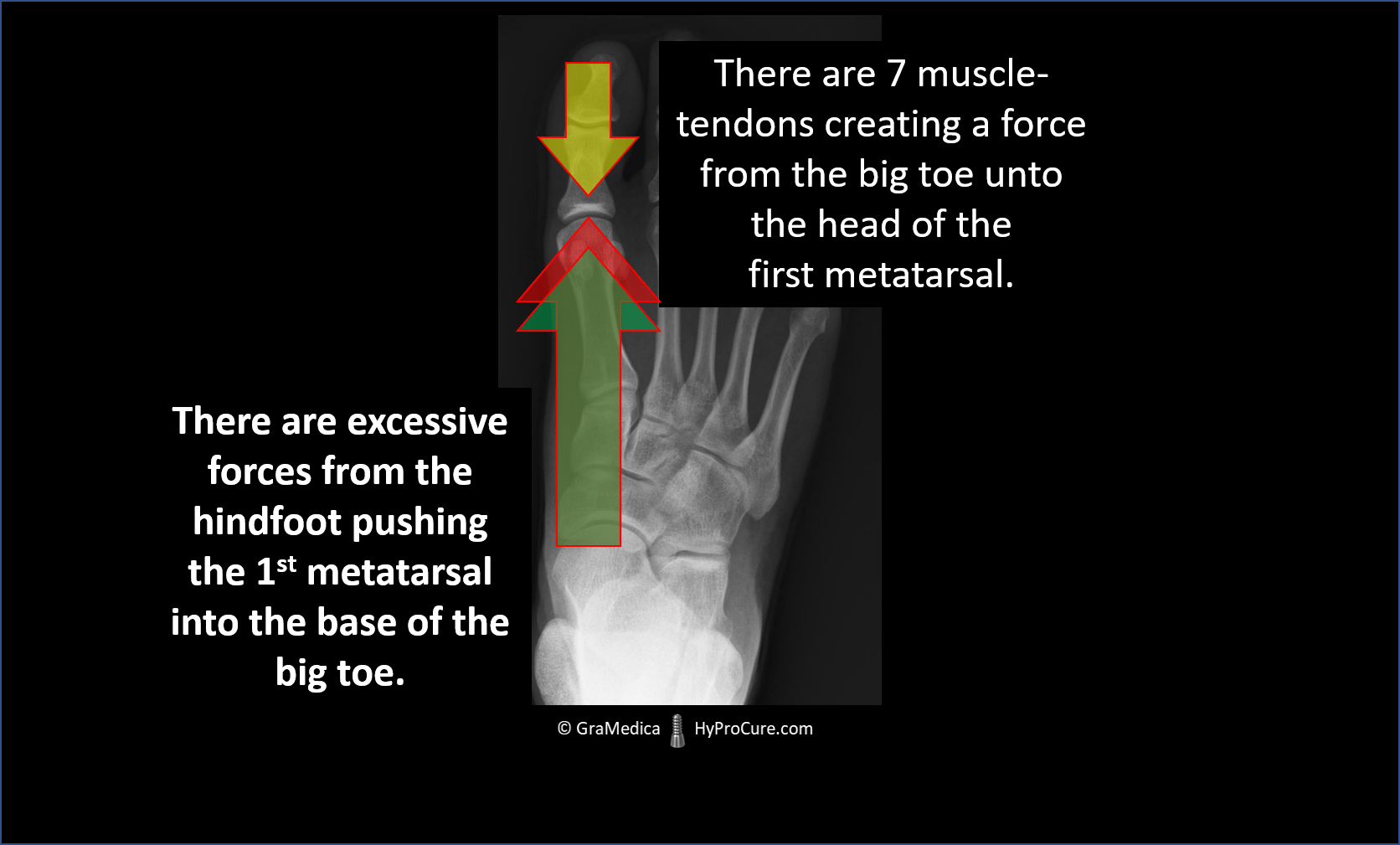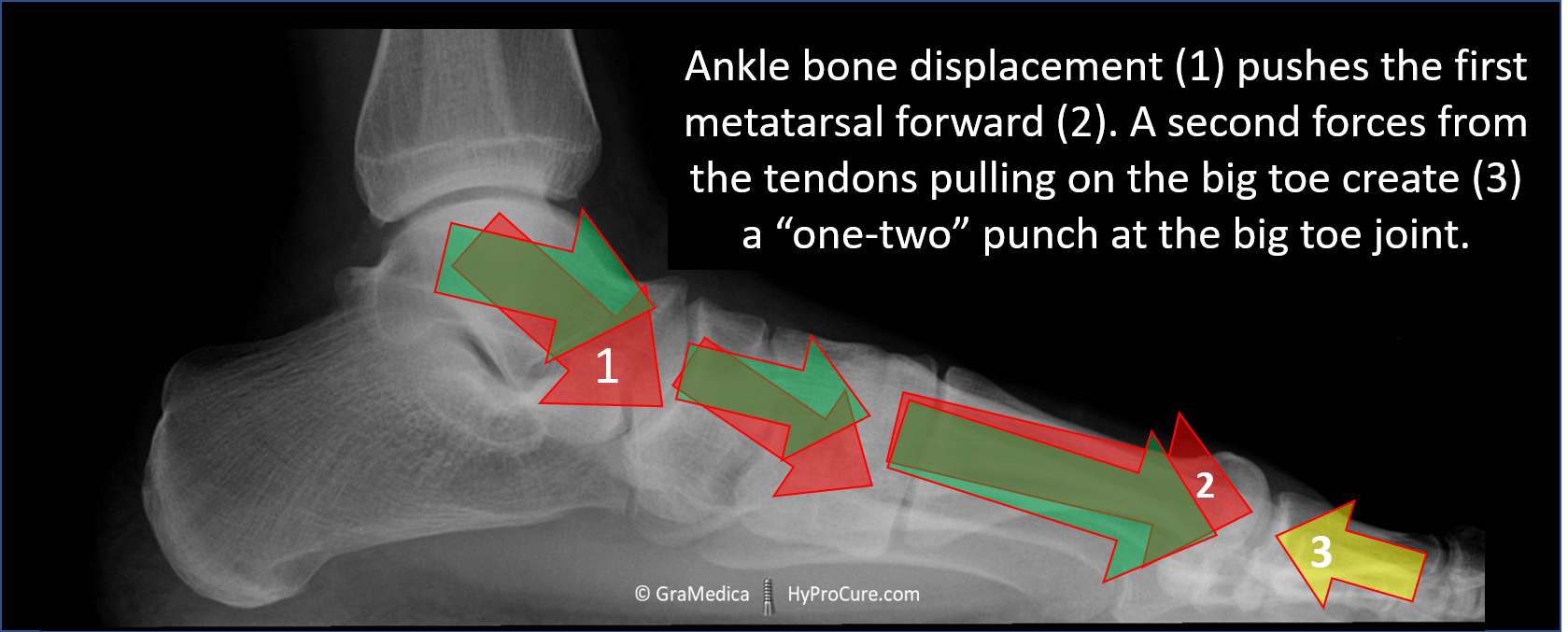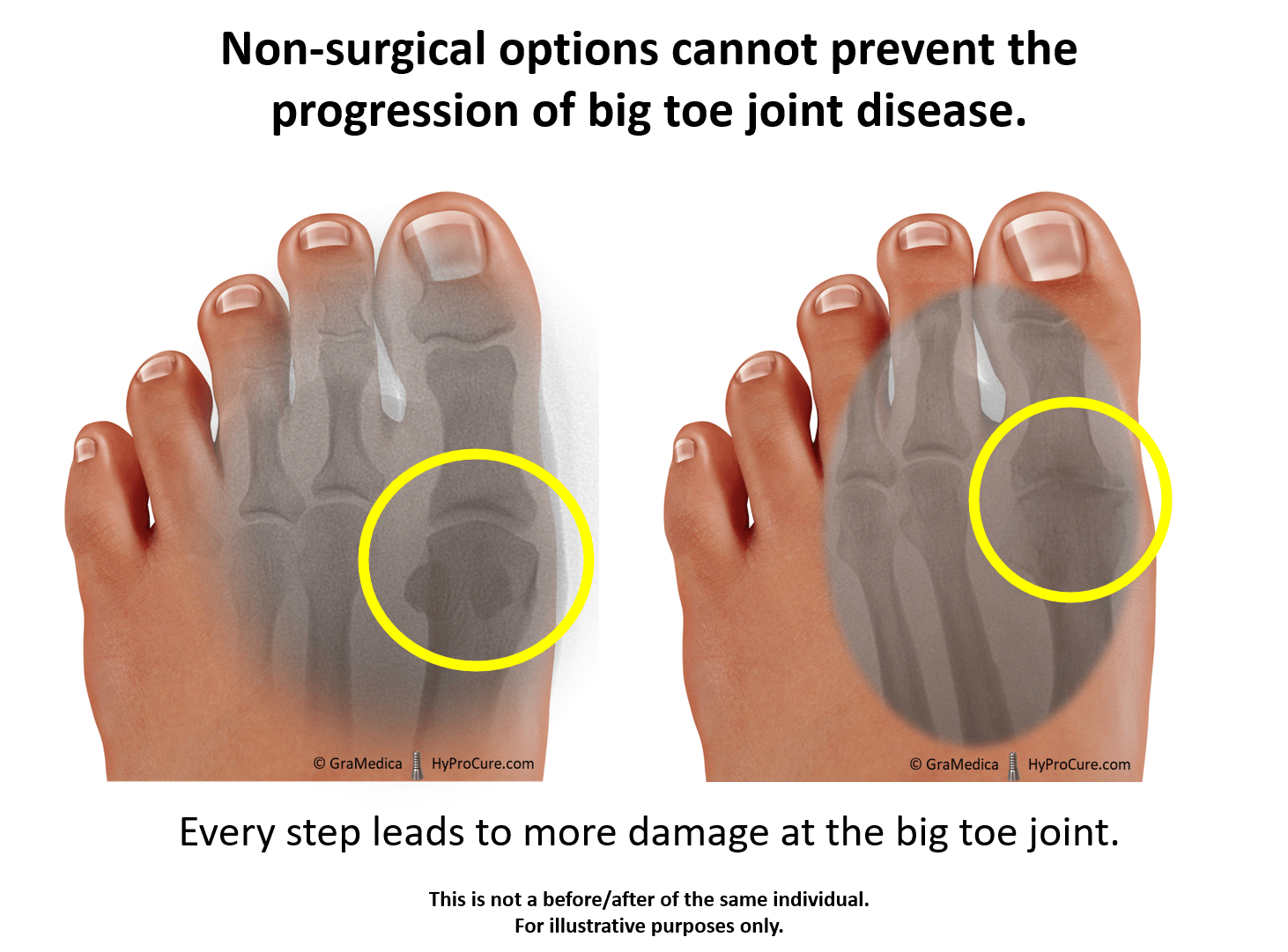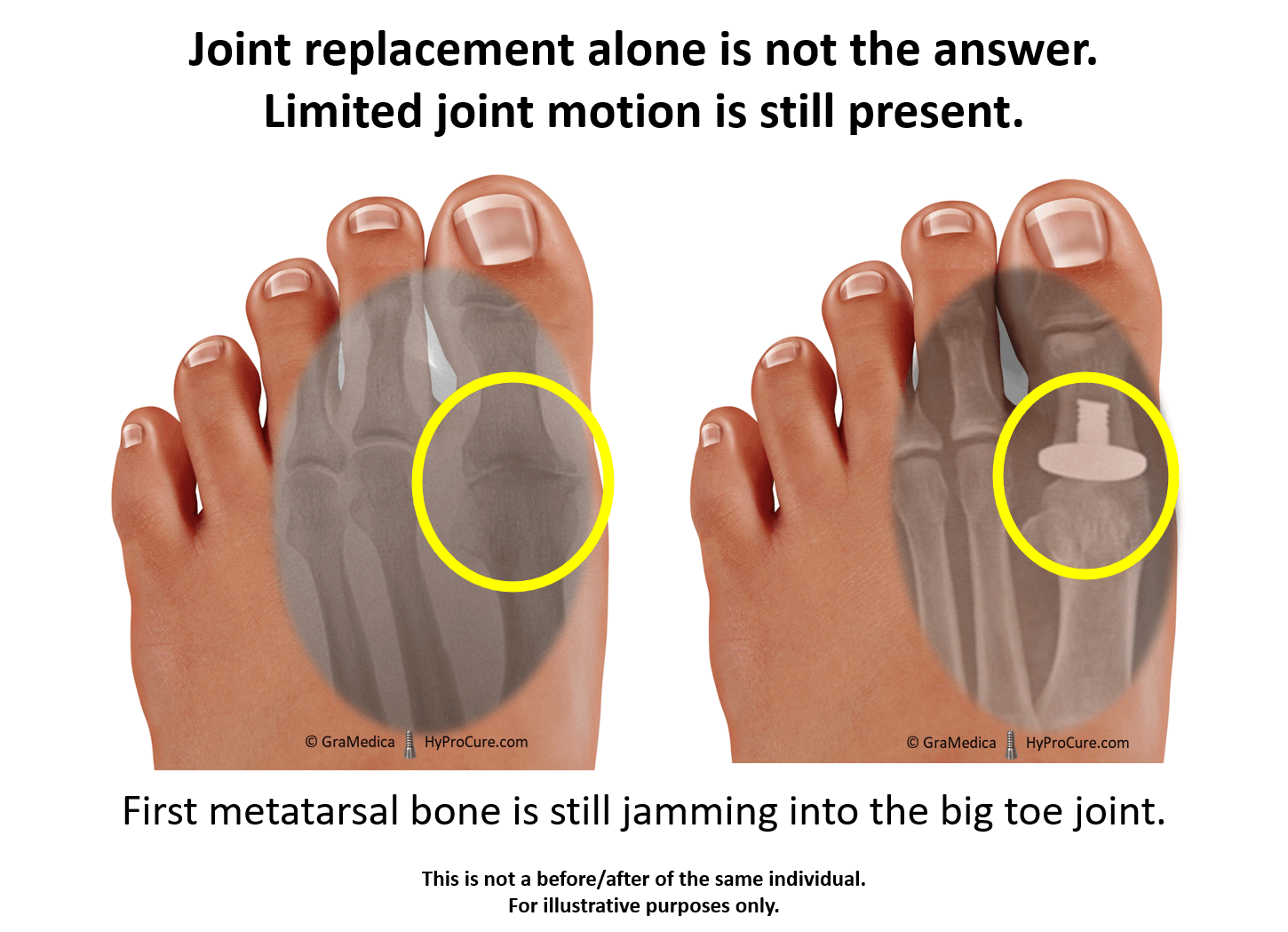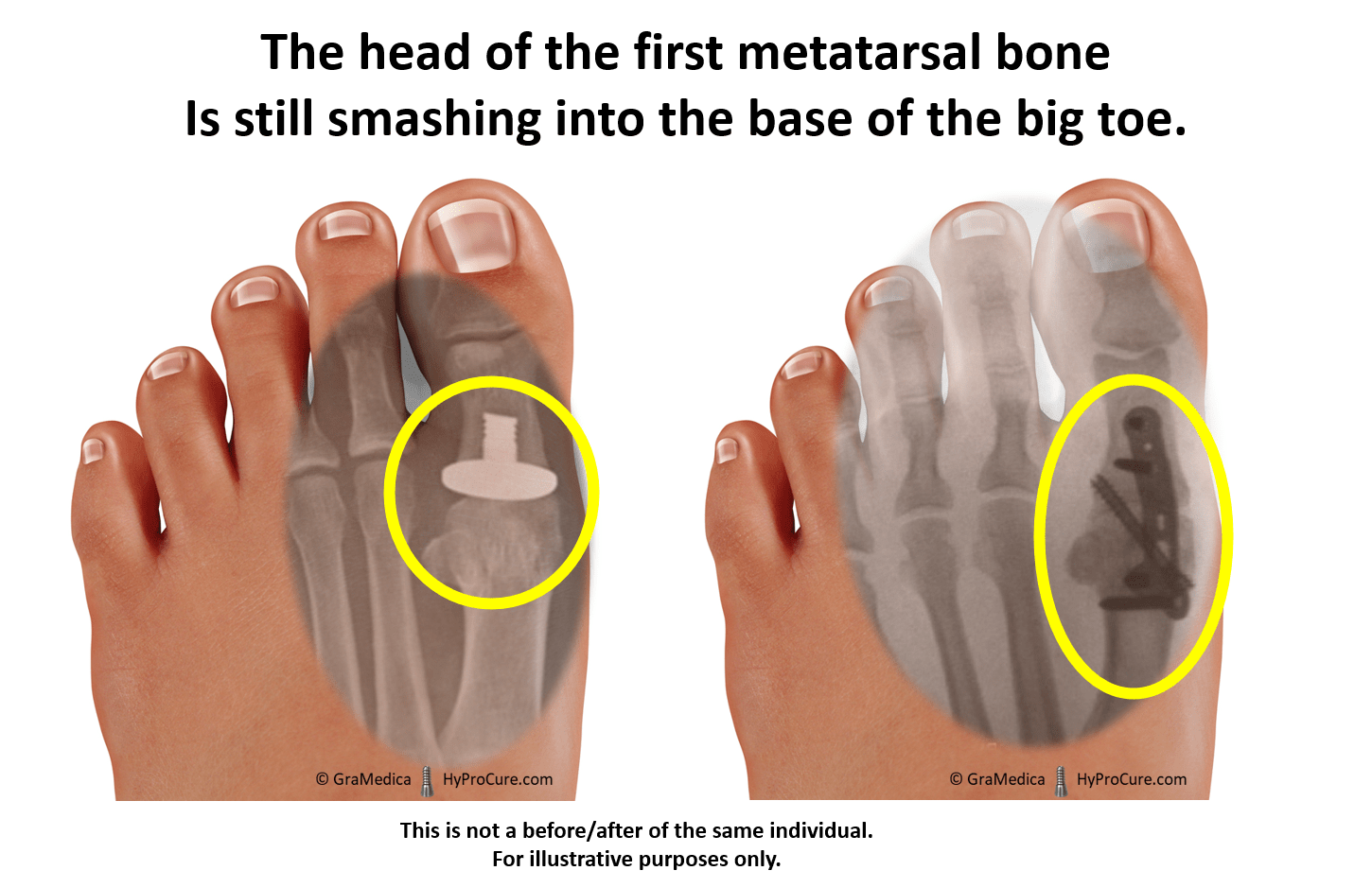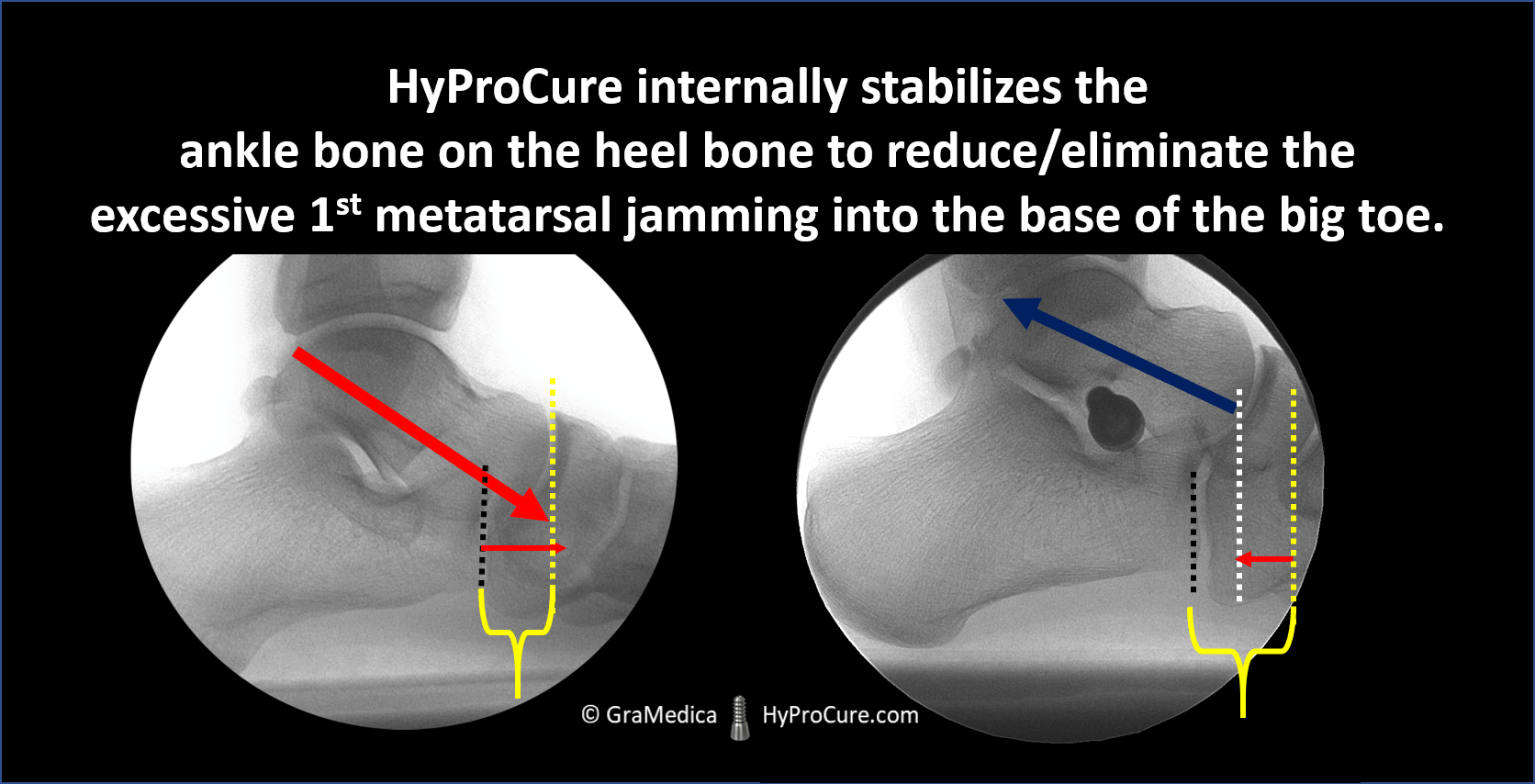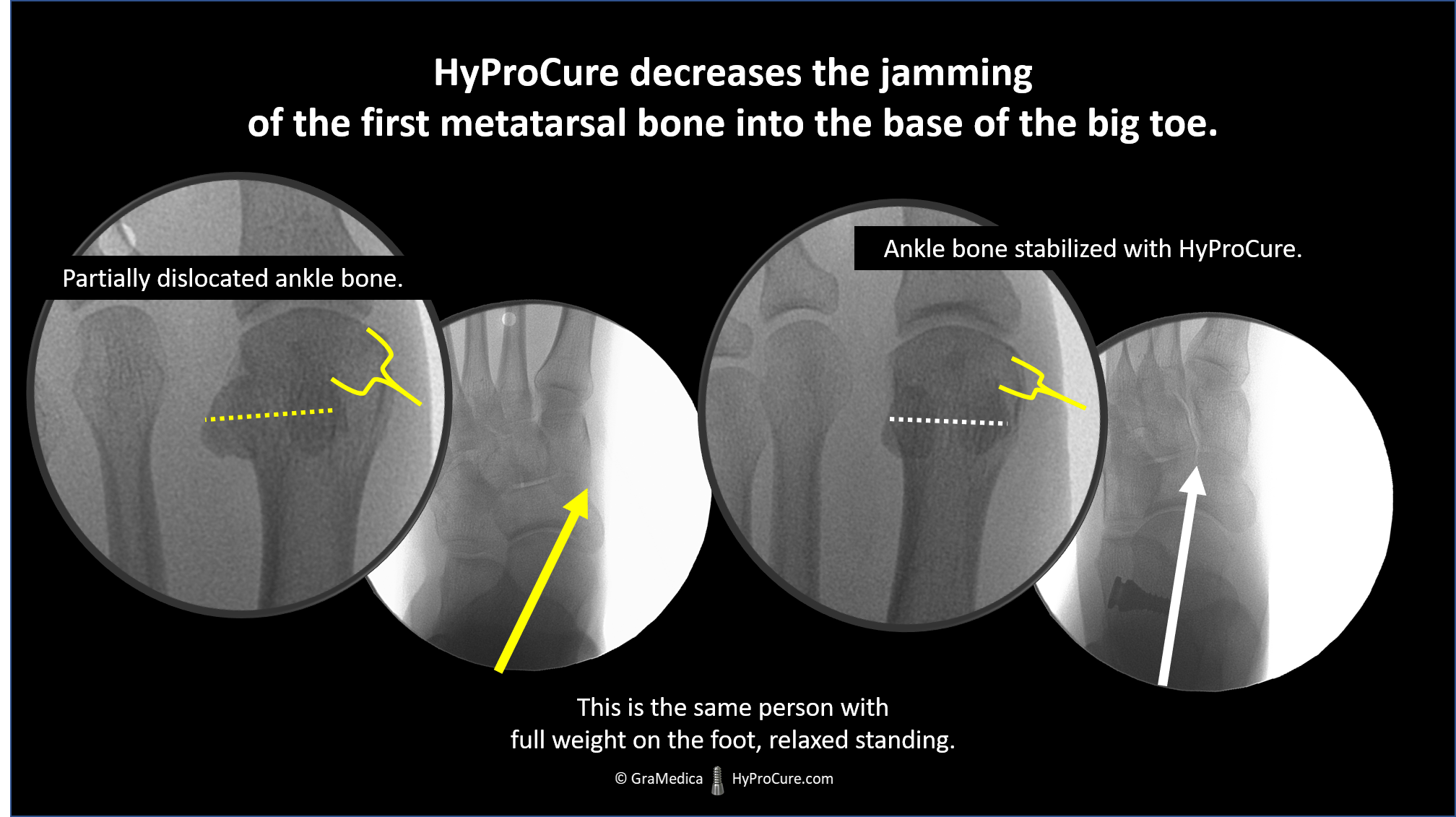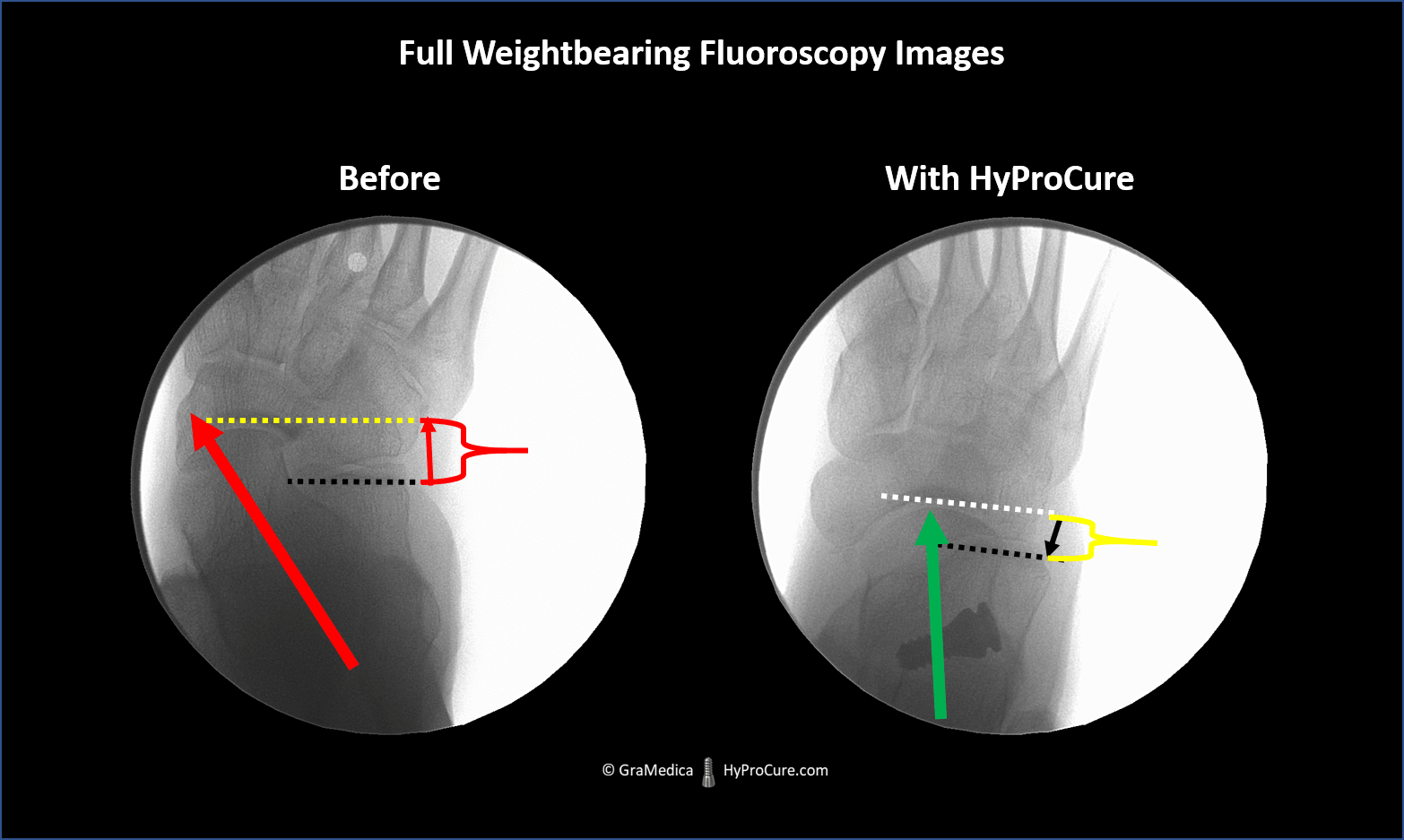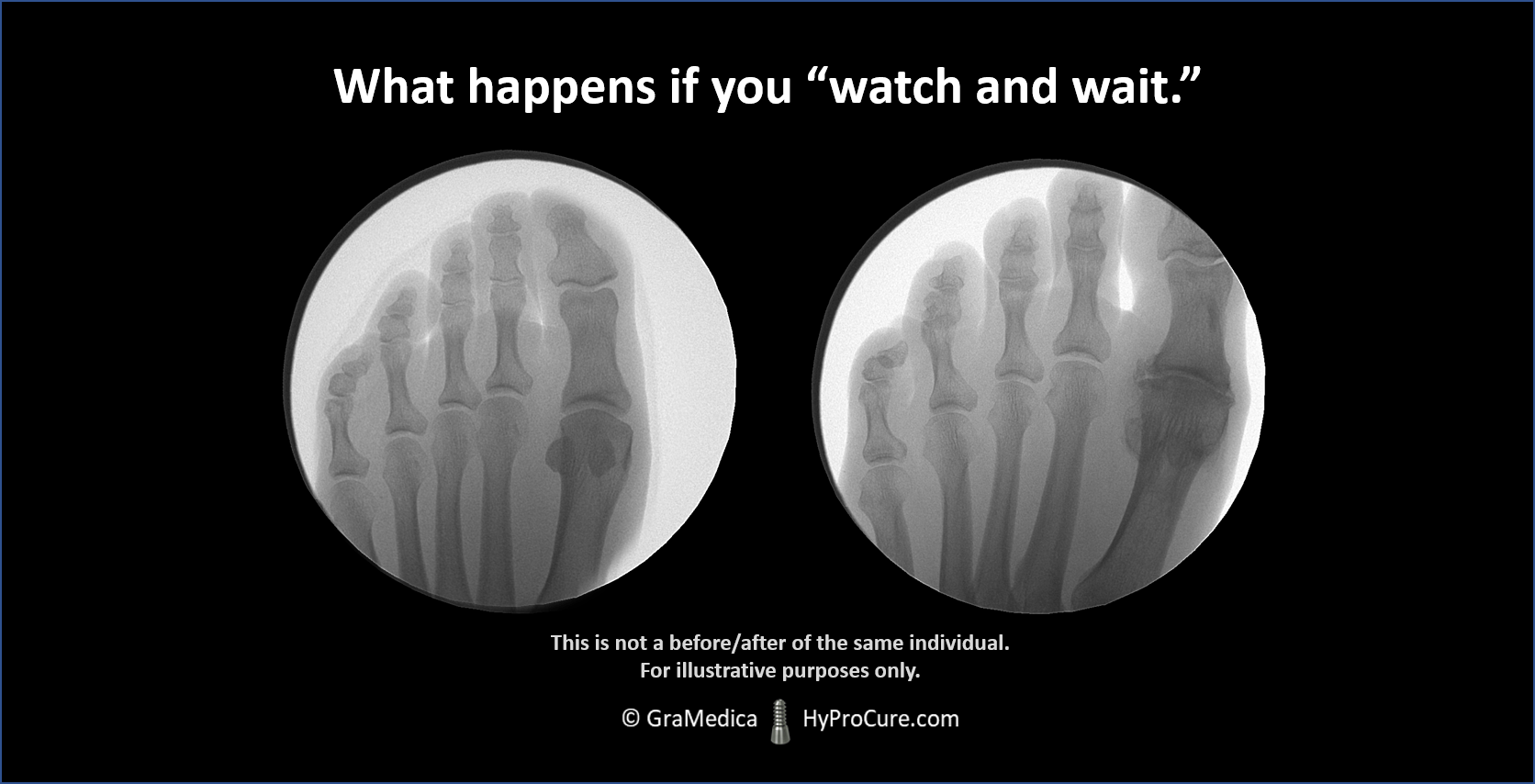Big toe joint pain – limited/painful motion
The real underlying cause of big toe joint arthritis begins at the back of the foot.
The hindfoot bones control the forefoot bones. Specifically, the ankle bone is responsible for the faulty mechanics of the big toe joint. The ankle bone should only have a slight amount of motion. The joint surfaces between the ankle and heel bones should remain in constant contact. The partial dislocation of the ankle bone on the heel bone results in excessive ankle bone motion. The ankle bone abnormally shifts forward, closing the naturally occurring space between the ankle and heel bones, called the sinus tarsi. The ankle bone also turns inward and can tilt downward.
It may not seem that dramatic but you have to remember the average person takes thousands of steps per day, millions of steps a decade. Eventually, even a slight amount of excessive ankle bone motion can have severely damaging effects on the cartilage of the big toe joint.
The head of the 1st metatarsal is jamming into the base of the big toe from the excessive ankle bone motion. Seven tendons attach to the big toe. When the muscles contract, it creates excessive force from the tip of the toe pushing back onto the head of the 1st metatarsal.
The combination of forces narrows the big toe joint. When the heel lifts off the ground during the walking cycle, this forces the big toe to bend on the head of the metatarsal bone. The cartilage at the head of the metatarsal bone becomes damaged because the joint space is narrowed. This creates inflammation and uneven joint pressure – the ingredients needed to cause osteoarthritis.
What is the best treatment?
The treatment of big toe joint disease usually begins with injections, physical therapy, arch supports, and many others.
Do those treatments make any sense? The cause of big toe joint pain begins with ankle bone instability. If you only provide a “treatment” to a big toe joint, that does not address the underlying cause. Think about getting a painful injection into your big toe joint. It feels better after the shot because of the numbing medication. The big toe joint has not been fixed; it’s just been numbed. The mechanics of the joint are still broken. The only difference is that without pain, you try to walk more. What does that do? It damages the joint even more.
Putting anti-inflammatory medicine, steroids, into the big toe joint won’t help anything either because the mechanical source of the inflammation is still there. Many other “promising” substances can be injected into the big toe joint. Just remember that until the ankle bone dislocation is fixed, those other treatments will be ineffective long-term.
When the partial or total joint implants fail, surgeons will “fix” it by completely removing the big toe joint and fusing the big toe to the metatarsal. There was a reason why the big toe joint bends at the big toe joint and not within the big toe itself. Eliminating the motion of the big toe alters the forefoot mechanics. Plus, excessive ankle bone motion is still there. The ankle bone continues to partially dislocate with every step.
The first place to initiate treatment is to remove the underlying cause of the symptom. If you have pain in your heel from a nail that you stepped on, it makes sense that you first pull the nail out of your heel. Why would you take pain medicine or put some padding around the nail? Every step is pushing the nail deeper into your flesh. If big toe joint disease is associated with a partially dislocating ankle bone, then that ankle bone needs to be stabilized. External measures are not proven to stabilize and maintain the alignment of the ankle bone. The best method to stabilize and maintain the alignment of the ankle and heel bones is to insert a titanium spacer into the sinus tarsi (HyProCure). This soft tissue procedure instantly reduces/eliminates the first metatarsal from being jammed into the base of the big toe.
What happens if you don’t treat big toe joint disease?
Early intervention is critical when treating big toe joint pain. Walking on a partially dislocating ankle bone will lead to continued trauma to the big toe joint. The cartilage will continue to erode and wear away until it’s completely gone. The dislocating ankle bone doesn’t care because it will continue to exert its damage to the big toe joint. Eventually, after suffering from chronic pain, the decision to undergo surgery will be necessary. If you wait too long, your conservative surgical options will no longer be available and your only option will be irreversible surgical joint removal.

